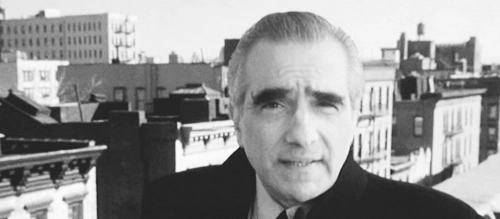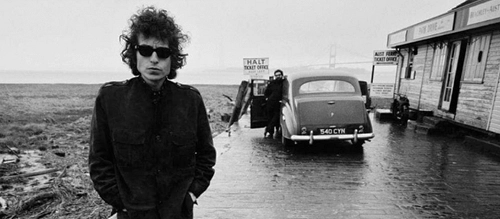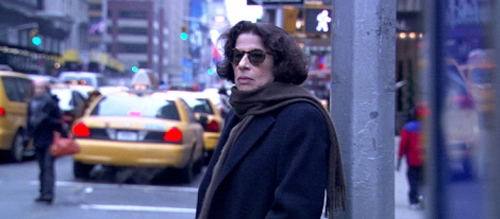5 Unmissable Martin Scorsese Documentaries
3. My Voyage to Italy (1999)

The 1990s were the most prolific of Martin Scorsese’s career, with the filmmaker directing six narrative films that began with Goodfellas in 1990 and ended with Bringing Out the Dead in 1999. He also directed two documentaries: A Personal Journey with Martin Scorsese Through American Movies in 1995 and My Voyage to Italy in 1999. Both films explore another of the man’s passions in life, his love for cinema, and how several films, directors and genres have sculpted his filmmaking style over the years.
My Voyage to Italy is the more personal documentary of the two though, as he once again delves deep into his upbringing while also touching on his proud Italian heritage. In the film, Scorsese revisits his old neighbourhood on the Lower East Side of Manhattan and talks about the films that influenced him the most as a child. As you’d expect on a voyage like this, My Voyage to Italy also acts as an educational film about the history of Italian cinema, with a particular interest in Italian neorealism. Scorsese routinely professes his love and respect for the Italian filmmaking greats like Federico Fellini, Michelangelo Antonioni, and Vittorio De Sica, but it’s the films of Roberto Rossellini (whose daughter, Isabella, ended up marrying Scorsese) that take up half of the film’s gigantic 246-minute runtime.
Scorsese loves the history of cinema and has created several of these passion projects, but My Voyage to Italy is the most important as it is where the majority of his film influences can be found. The boxing scenes in Raging Bull are clearly influenced by the boxing sequences in Luchino Visconti’s Rocco and His Brothers (1960), while Taxi Driver harbours mirroring themes and asks similar questions to that of Bernardo Bertolucci’s Before the Revolution (1964). My Voyage to Italy is the ultimate guide for Scorsese fans everywhere, and by watching it you will begin to understand the great filmmaker’s style and intent. My Voyage to Italy is a love letter to the great Italian films of yesteryear, exploring the impact that Italian neorealism has had on cinema and countless other great directors throughout history.
4. No Direction Home (2005)

In 2005, sandwiched right between two of Martin Scorsese’s most underrated masterpieces, 2004’s The Aviator and 2006’s The Departed (the latter earning Scorsese the only Best Director Oscar win of his career) was another love letter to the musical arts. No Direction Home shifts the attention over to the great life and career of Bob Dylan, one of Scorsese’s favourite musicians.
The film shines a light on the period between Bob Dylan’s arrival in New York in 1961 and his supposed retirement that came after he was involved in a motorcycle accident in 1966. Scorsese focuses on the life of Bob Dylan and the impact he had on the music of the 20th century, which was of course gargantuan. No Direction Home follows Dylan’s rise to fame as one of the great folk music performers and songwriters, and how his success led to an almost cultural revolution from his loyal followers. But it wasn’t all plain sailing, and as such the film also shines a light on Dylan’s controversial switch to a more rock ‘n’ roll style of music, a decision that ultimately led to his most successful career period.
Scorsese’s love for Bob Dylan is monumental (this was the first of two films made by Scorsese about the singer), with several of Dylan’s songs being featured in a handful of his films. But it’s not just the music that Scorsese loves, it’s the man himself: Dylan’s character. Scorsese’s enjoyment of character examination can be seen throughout his filmography; films like Taxi Driver, The King of Comedy (1982), After Hours (1985), and Goodfellas are just some of the films that delve deep into the exploration of a character. Scorsese sees Dylan in some of these characters it seems; not quite the psycho killer kind of comparison from Taxi Driver and The King of Comedy, but the lonely and mysterious nature of this personality. The opportunity to examine the life of a man who lives an existence of obscurity was too good an opportunity to turn down. Scorsese never wanted to divulge too much in a way that disrespects Dylan’s privacy, but he captures the very essence of Dylan’s personality that makes him iconic; Scorsese illustrates how Bob Dylan’s music will live on forever.
Another film with a whopping runtime (208 minutes), No Direction Home is split up into two parts as a means of capturing as much as possible. Dylan had no involvement with the film apart from the interview he gave to his manager at the time, Jeff Rosen, due to him not wanting to “look back.” It was Rosen who offered the opportunity to Scorsese to direct and edit all the footage he had accumulated over the years, and it led to one of the most personal and intricate documentations of a musician ever made.
5. Public Speaking (2010)

The final film on this list of must-see Scorsese documentaries is the incredibly subtle but equally brilliant Public Speaking. The film is of a similar ilk to No Direction Home in that it is an examination of a character, and what a character she is. American author Fran Lebowitz is the star of this 2010 documentary, and for a concept as simple as an interview across a table, she carries it with her brilliantly comedic takes on life and the world in which we live.
This feature-length documentary delves deep into the life of the writer who is known for her extremely bold takes on modern-day society. Scorsese weaves his magic once again by merging unscripted monologues with archival footage collected from various points in Fran’s life, as well as moments in history that become the source of their conversations. The result is an authentic and hilarious take on the world from the mind of an eccentric soul. Fran might be a bit of an unknown to many of you out there, but by the end of this film, she will be eternally etched into your mind.
The film begins with a delicate insight into Fran’s childhood as she explains how bad she was at school and her dreams of becoming a cellist, though in her own words she was “incredibly untalented”. Originally from New Jersey, Fran moved to New York when she was young and quickly developed that typical New Yorker attitude.
Fran is an acclaimed writer of comedic essays and is known for sardonic social commentary on American life. Throughout her life living in New York City, she brushed shoulders with prominent figures of the 70s and 80s such as Andy Warhol, Robert Mapplethorpe, David Wojnarowicz, and of course, Martin Scorsese himself. One of the most interesting topics of discussion that the film discloses is Fran’s struggle with writer’s block, something that has troubled her since the mid-1990s. Fran’s problem with this is what led her to become a professional public speaker (and where the title of the film came from).
Scorsese loves to evolve and document loners and introverts, people on the edge of society. But this isn’t just a documentation of Lebowitz’s life – the way in which Scorsese chooses to shoot certain sequences of establishing footage could have been taken straight out of Taxi Driver. Fran’s views are thought-provoking, and it’s her bullish and firm mindset that evokes adverse thoughts. Her quick wit and brutality are what stand out though, with every take having a comedic punchline, as we can see from Scorsese whose shoulders bob up and down as he laughs at all of Fran’s anecdotes throughout this enlightening and authentically funny film.
Recommended for you: Killers of the Flower Moon (2023) Review
When you watch any of these documentaries, you realise how important their varying themes are to the work of Martin Scorsese. Their significance allows you to reevaluate his narrative films on repeat viewing, almost looking at them with a bit of extra insight. Scorsese’s prolific nature in both film classifications is a testament to the man’s skill, his passion for filmmaking, and his constant thirst for creativity and expansion. More directors should cross the border into documentaries so that they can expand on their style and their passions in more detail. One thing is for certain though, Scorsese is the greatest dual filmmaker there is and ever was, and his highly acclaimed 44 films in both mediums is about as much proof as you’ll ever need.
Written by John McDonald
You can support John McDonald in the following places:
Website: My Little Film Blog
Muck Rack: John McDonald
Twitter: @JohnPMcDonald17

